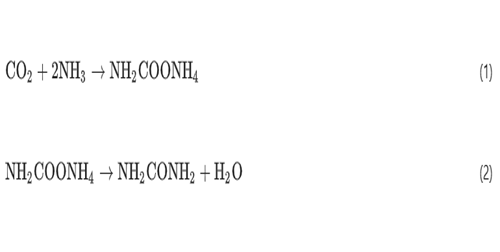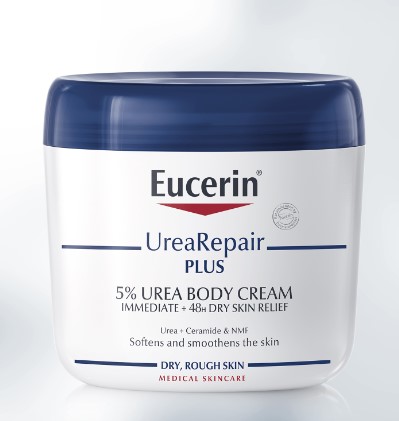Urea- a Versatile Nitrogenous Compound
Urea, also known as carbamide, is an organic compound with chemical formula CO(NH2)2. This amide has two –NH2 groups joined by a carbonyl (C=O) functional group. It is also a carbonyl group with two C-bound amine groups. Urea appears as solid odorless white crystals or pellets. The density is 1.335 g /cc. It is noncombustible. Urea is a compound formed in the liver from ammonia produced by the deamination of amino acids. It is the principal end product of protein catabolism and constitutes about one half of the total urinary solids [1].

Urea serves an important role in the metabolism of nitrogen-containing compounds by animals and is the main nitrogen-containing substance in the urine of mammals. It is a colorless, odorless solid, highly soluble in water, and practically non-toxic (LD50 is 15 g/kg for rats) [2]. Dissolved in water, it is neither acidic nor alkaline. The body uses it in many processes, most notably nitrogen excretion. The liver forms it by combining two ammonia molecules (NH3) with a carbon dioxide (CO2) molecule in the urea cycle. Urea is widely used in fertilizers as a source of nitrogen (N) and is an important raw material for the chemical industry.
Urea has a role as a flour treatment agent, a human metabolite, a Daphnia magna metabolite, a Saccharomyces cerevisiae metabolite, an Escherichia coli metabolite, a mouse metabolite and a fertilizer. It is a monocarboxylic acid amide and a one-carbon compound. It derives from a carbonic acid. It is a tautomer of a carbamimidic acid.
Urea is manufactured by the reaction of ammonia and carbon dioxide to form ammonium carbamate first. Ammonium carbamate is then dehydrated to form urea:
2NH3 + CO2 → NH4COONH2
NH4COONH2→ NH2CONH2 + H2O
The carbon dioxide–ammonia reaction to form urea, ammonium carbamate and water takes place in a reaction vessel at a pressure 160–200 atmosphere and temperature 170 °C–190 °C. Unreacted ammonia and carbon dioxide are also present along with ammonium carbamate and urea in the reactor exit stream. The pressure of the exit stream is let down in stages in decomposers. The urea formed remains in the solution while the ammonia and carbon dioxide evolved, are recovered from the decomposers and recycled in the reaction vessel. The urea solution thus obtained is concentrated to 99.8% in vacuum evaporators and finally prilled in prilling tower.
Urea is the chief nitrogenous end product of the metabolic breakdown of proteins in all mammals and some fishes. The material occurs not only in the urine of all mammals but also in their blood, bile, milk, and perspiration. In the course of the breakdown of proteins, amino groups (NH2) are removed from the amino acids that partly comprise proteins. These amino groups are converted to ammonia (NH3), which is toxic to the body and thus must be converted to urea by the liver. The urea then passes to the kidneys and is eventually excreted in the urine.
Urea was first isolated from urine in 1773 by the French chemist Hilaire-Marin Rouelle. Its preparation by the German chemist Friedrich Wöhler from ammonium cyanate in 1828 was the first generally accepted laboratory synthesis of a naturally occurring organic compound from inorganic materials. Urea is now prepared commercially in vast amounts from liquid ammonia and liquid carbon dioxide. These two materials are combined under high pressures and elevated temperatures to form ammonium carbamate, which then decomposes at much lower pressures to yield urea and water.
Because its nitrogen content is high and is readily converted to ammonia in the soil, urea is one of the most concentrated nitrogenous fertilizers. An inexpensive compound, it is incorporated in mixed fertilizers as well as being applied alone to the soil or sprayed on foliage. With formaldehyde it gives methylene–urea fertilizers, which release nitrogen slowly, continuously, and uniformly, a full year’s supply being applied at one time. Although urea nitrogen is in nonprotein form, it can be utilized by ruminant animals (cattle, sheep), and a significant part of these animals’ protein requirements can be met in this way. The use of urea to make urea–formaldehyde resin is second in importance only to its use as a fertilizer. Large amounts of urea are also used for the synthesis of barbiturates.
Urea reacts with alcohols to form urethanes and with malonic esters to give barbituric acids. With certain straight-chain aliphatic hydrocarbons and their derivatives, urea forms crystalline inclusion compounds, which are useful for purifying the included substances [3].
Urea can be irritating to skin, eyes, and the respiratory tract. Repeated or prolonged contact with urea in fertilizer form on the skin may cause dermatitis. High concentrations in the blood can be damaging. Ingestion of low concentrations of urea, such as are found in typical human urine, are not dangerous with additional water ingestion within a reasonable time-frame. Many animals (e.g., dogs) have a much more concentrated urine and it contains a higher urea amount than normal human urine; this can prove dangerous as a source of liquids for consumption in a life-threatening situation (such as in a desert). Urea can cause algal blooms to produce toxins, and its presence in the runoff from fertilized land may play a role in the increase of toxic blooms [4]. The substance decomposes on heating above melting point, producing toxic gases, and reacts violently with strong oxidants, nitrites, inorganic chlorides, chlorites and perchlorates, causing fire and explosion [5].
References
[1] https://en.wikipedia.org/wiki/Urea
[2] "Urea - Registration Dossier - ECHA". echa.europa.eu.
[3] https://www.britannica.com/science/urea
[4] Coombs A (27 October 2008). "Urea pollution turns tides toxic". Nature. doi:10.1038/news.2008.1190. Retrieved 5 August 2018.
[5] International Chemical Safety Cards: UREA. cdc.gov
You may like
Related articles And Qustion
See also
Lastest Price from Urea manufacturers

US $0.00-0.00/kg2025-12-08
- CAS:
- 57-13-6
- Min. Order:
- 1kg
- Purity:
- 98%
- Supply Ability:
- 1000kg

US $280.00-260.00/ton2025-07-15
- CAS:
- 57-13-6
- Min. Order:
- 25ton
- Purity:
- N46
- Supply Ability:
- 5000tons





